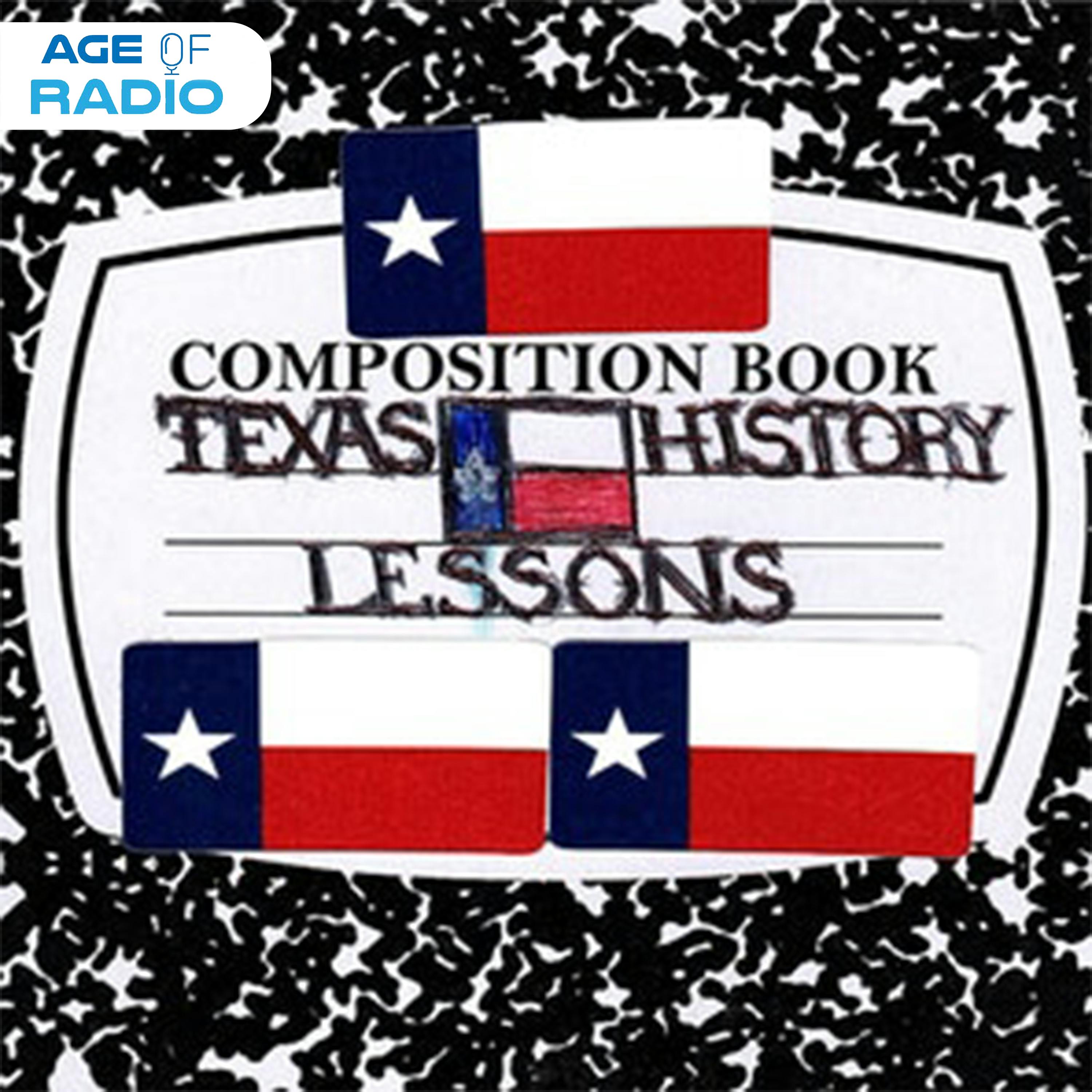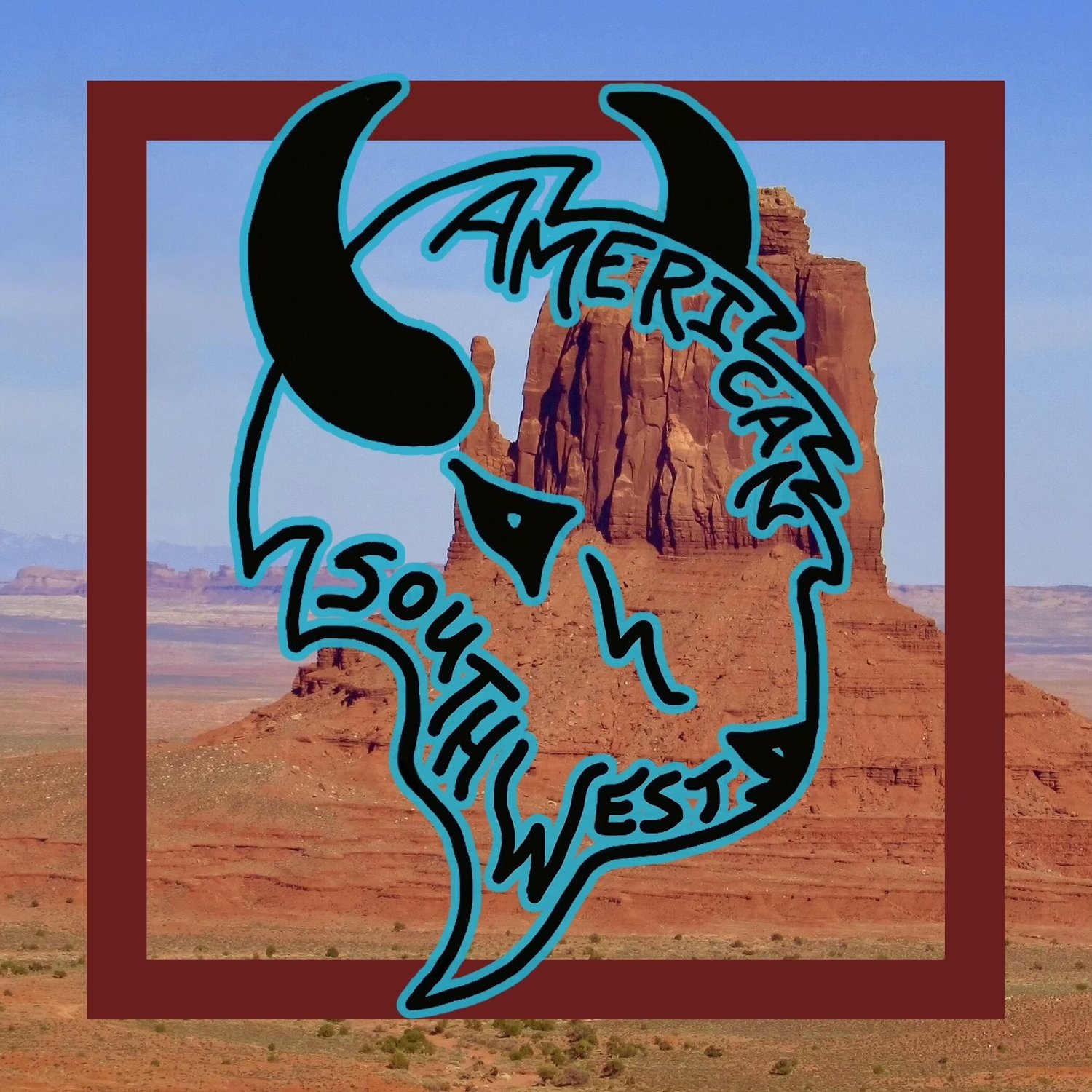
the Enchantment Chronicles
Chronicling the stories of the enchanting people, places, and events from New Mexico - the Land of Enchantment.
the Enchantment Chronicles
From School Proposal to State Senate: The Journey of New Mexico's Green Chile Aroma from a Las Cruces classroom to the Santa Fe Roundhouse
Step into a tantalizing world of heated debates, spicy aromas, and fifth graders taking on legislative powerhouses in an exciting episode of New Mex Podcast. We're serving up a dose of New Mexico's beloved green chile, not on your plate, but as a potential state symbol - its aroma. You'll get a whiff of the recent legislative proposal by a zealous fifth-grade class from Monte Vista Elementary, who pushed to make the smell of roasting green chile the official state aroma, overpowering other strong stenches such as oil and dairy farms. Join us as we unravel the intricate debate between Senators Bill Soles and Daniel Ivy Soto, who spar over the merits of this piquant suggestion. Get ready to feast your ears on the tale of two state vegetables, one being the star of this controversy and the other, the humble pinto bean, who didn't come looking for trouble.
In the second half of our show, we're thrilled to share some big news - we're taking the spirit of New Mexico online with the launch of our new website, Enchantment Chronicles! This is your go-to portal for keeping up with all our latest episodes, and your direct line to us. We dish out details on how to connect with our team, and even throw in some mouth-watering musings on the possibility of a green chile beer. Don't forget to follow us on our social platforms for more extraordinary tales from the Land of Enchantment. As always, remember to keep the spice alive!
Check out the Enchantment Chronicles on Spotify, Google Podcasts, Apple Music, or anywhere podcasts are found.
Follow the Enchantment Chronicles on your favorite social media!
Instagram: @EnchantmentChronicles
Twitter/X: @NewMexPodcast
https://www.enchantmentchronicles.com
Here we are. I'm here with the man of enchantment and we have a special, very special podcast for you featuring some recent history and some of the great prides of New Mexico, right.
Speaker 2:Yeah, today we're going to be talking about a couple of state, I guess, symbols, the state of Aroma and the state vegetable or vegetables. We have two. We're going to be talking about those two things or those three things and fun conversations.
Speaker 1:Yeah, so yeah, we'll have a fun debate about whether we have two vegetables or no vegetables, so we'll figure it out, okay. Well, the first part of our show is some recent history we have had. In 2023, new Mexico has added to its plethora of official symbols, songs, etc. And a state aroma, which you know might not sound great if you're listening to us from some other state, but trust us, we have a reason to have some pride here and we have actually multiple reasons.
Speaker 1:Fifth grade class down from Las Cusas, where you're from right, johnny, I am Well, I think it's. It might be safe to say that the state of New Mexico might have a pretty heavy duty record of kids proposing legislation that actually passes, and this is this is the most recent example. We'll talk about more examples later, but a fifth grade class at Manavista Elementary School introduced a bill on the floor After Las Cusas, senator Bill Soles, a former teacher, a retired teacher, had visited their classroom. They pushed for us to have an official state aroma. Now, I know you can guess, but what would you think? What might be a state state aroma in the for our state? What would? What would you?
Speaker 2:think there could be a lot of things. It could be the hot air balloon fuel. It smells.
Speaker 3:Yeah.
Speaker 2:You know we could have oil from down in the southeast Anytime you go down to Hobbs area, carl's Ben, you know.
Speaker 1:You know what I'm talking about Actually yeah, senator Daniel Ivy Soto, actually in the debate was was willing to push back and say maybe it should have been oil and gas drilling or dairy farms. But one of the fifth graders pushed back and they answered that. Our answer today the roast, the smell of roasting green chili is something you can smell everywhere in New Mexico, especially in the late summer and the fall. Through the fall we have these big propane drums that rotate and rotate and it's kind of a tradition you can get up to. You know a Big bushel basket of chilies roasted at a time and they specified the green chili. We have two kinds red chili and green chili, but they specified that and it was. It was quite a debate.
Speaker 1:Souls Spoke to the Albert-Curkey Journal and said they're gonna be telling their grandkids about how they were part of making this Happened and how they really face down those questions as they came along. So that is our official smell that the the fire roasted green chili, which, which may be with us for a while, although the people at Sandia labs are already working on a solar roaster which their claiming is has passed. It has passed a taste test. They say the solar roasting is even more flavorful. But and some legislators wanted to stick us with fresh alfalfa, because we do have believe I'm not. Here in Mexico we have a decent amount of farming up and down, the rear grand particularly, and alfalfa is a main, a main crop for us. But the smell of roasted chili, which is kind of Something urban and rural people can access, has officially become our state aroma. So congratulations again to the kids at Montevista elementary and Las Cousins for pushing that through.
Speaker 2:Yeah, and anybody who's driven down the road in late August, early September. I don't know drew if you've done this, but I've certainly followed my nose and gone. I've gotten my yearly chili fix. Yeah and for those of you outside of New Mexico, I know it's it's catching steam elsewhere. I've been down to Austin and San Antonio and they have green chili roasts and Arizona and Southern California and and I've called on Colorado tries they try to say that their green chili is good.
Speaker 2:Or better than New Mexico. But we all know the, we all know the truth. But, yeah, anybody who's, anybody who's Spent any time in New Mexico and it knows exactly it's really hard to describe that knows exactly that smell. And it's a right of passage and it's kind of a yearly thing that you go through and I don't know have you ever had your chili roasting, chili peeling, parties drove.
Speaker 1:I have. I I don't have freezer space for the whole. You get it, you get a big black trash bag and I don't have freezer space for all of it. So we've we've had a few of those. I Am a guy that goes ahead and peels the chili. Some people argue that you should freeze it and peel it, as you thought, because it keeps the flavor a little better. I just know I'm more likely to use it if I don't have to peel it.
Speaker 2:Yeah, so you let me make sure we wear Gloves and we don't touch our eyes. I.
Speaker 1:Do have a little bad news for you, johnny, that they're they're trying to go green chili as far away as Iowa. They can try that they have. Yeah, I would say they have tried it. The flavor comes out a lot stronger from our dry soil or alkaline soil, so but I guess it's better than nothing.
Speaker 1:Better than nothing if you can't get anything To speak of a green chili and red chili. Just to specify that within it's kind of like a Taoist thing or Eastern, within the red there is green and within the green there is red.
Speaker 2:We should qualify that is we never get red is just An old, older green chili pepper for the most part. Yeah, go and get your roasted green chili. You always get a little red from time to time and you keep that in there because that's what makes it special. All right, I think of green chili. It is also Now that, now that it's the state aroma, the smell of green chili, roasting green chili, and the reason why it's the state aroma is, is because it's also the state vegetable.
Speaker 1:Possibly, possibly Unofficially. Unofficially.
Speaker 2:It's officially our state vegetable. It's kind of like Pluto, where that's not a plan, planted anywhere else we're except over New Mexico. Chili is actually a fruit, but we have two state vegetables and the other one is a pinto bean or which is, I guess, technically actually a vegetable, but it's actually. It's a lagoon subset of vegetables, but we have two, two state vegetables and drew, if I don't know, if you know, the history behind it, but there was a I think it was in 1965 or so and I don't think a child or a school in proposed, proposed these two as our vegetables. But there was apparently a really, really, really Big debate in a legislature, because you know we've got, because that's our legislature. We debated while about what our Veg, what our state vegetables should be, and we couldn't decide. This must have been a good two month session right.
Speaker 2:I hope so. Yeah, so we couldn't decide. So our legislature decided to enact or two state vegetables and, like I said, technically the chili is a fruit. But, all the and, ironically enough, drew we don't have a state Fruit, so A little bit about the state vegetable. I don't know if you know the history of chili, but it's pretty interesting. I.
Speaker 1:Don't know a lot about that. I know it's been Cultivated here for at least a couple thousand years.
Speaker 2:So probably, probably, there are some resources, some sources that say the Spanish brought it in here, but I'm willing to believe that it was here Way prior to the Spanish. They like to try to take credit for everything that comes here.
Speaker 1:Not unlike some other groups that have kept them.
Speaker 2:You know the way it is, but you know it was here for Generations. And and our green chili. And if you go up and down the valley and go up and down these little communities, every community has its own, every Pueblo has its own chili. The Espanola Valley, the Sandia, they all have their own own, really Interesting different cultivars that are unique and specific to that area.
Speaker 2:Yeah, you know, some people swear by Jamiro Red, for instance, and I'm a southern boy and I swear by southern Green chili and the big one, the green chili that everybody knows is, is a cultivar subset of the Anaheim pepper, but, yeah, our steak chili is is. There is a. There's a professor Guy by the name of Fabian Garcia. He was a professor down in a ratio Right in the early 1900s when I was in Mexico, a and m. He was from Mexico, he was born in Chihuahua or somewhere along those lines. He came across, he was Came, came up to New Mexico, married into the Amidors, which is a big family down there, and he became the father of agriculture of New Mexico and and he developed Dozens of chili peppers, dozens of other plants, the pecans, for instance, okay, which are huge down there. Yeah, we leave, let me see he.
Speaker 2:He helped develop something like 14 lineages of chili that we know today, and the most famous one is a one called by the name of New Mex 9 or number 9 pepper, okay, and it's relatively low on the scoville unit, which is the heat index, but it had, I believe, stronger skin and so it's a lot easier to transport and it had a big fleshy interior and I believe those are the chilies Chili that they make chili rano, which, oh, that makes sense. That makes it just. You know. And for those you don't know, chili rano is? It's a chili pepper with a bunch of cheese inside, battered and fried. Nothing else like another world. It's so good.
Speaker 1:Yeah, imagine your enchilada, but it's all a chili lot of lot of cheese, a lot of sauce.
Speaker 2:Yeah, yeah, we'll be talking about Dr Garcia later on, but he was the reason. He is the reason, and not many people know about Dr Garcia, but he is the reason why New Mexico is what it is in the agricultural department of Chili. We are the reason why Colorado has its chili. Wow.
Speaker 1:And anaheim apparently.
Speaker 2:And anaheim and everywhere else. And you know, recently and we cover this later, but recently they just passed. They passed the law within the last five to ten years or so where, if you want to, because so many people know how wonderful chili is and a lot of it is coming from China they exported our chili there to grow but they marketed under there's a law that was passed that requires if it's grown in New Mexico to say New Mexico grown or New Mexico true. So if you go down to Texas, I just say Texas. I've been in Austin at the Whole Foods and, yeah, you know, non, new Mexico chili is one price. In New Mexico chili is a little bit more.
Speaker 1:Yeah, and, and just to give you a little cultural, give you, give anyone that that hasn't been embedded in New Mexico a little cultural. You could get anything infused with chili here. You can get your oils, you can get your wine infused with chili. We have green chili beer and, and they're not bad. They're not bad. Chili is a big part of our diet. It's rich in vitamin C. For those of you Keep in track at home, more, more vitamin C in a spoonful of chili, I've heard, then then a glass of orange juice.
Speaker 2:So that sounds pretty.
Speaker 1:Now I made a bit off about the green, about the heritage of the chili here, but the bean the bean certainly has an ancient heritage here, right, right, johnny.
Speaker 2:That's as far as I know.
Speaker 1:It's been around here for thousands of years the three sisters corn beans and squash, which were Cultivated here from the time that we've had cultivation here, are one of the two sort of viable, mostly vegetarian diets that can give people enough of the right various kinds of proteins, because beans don't quite do it on their own. Squash, you know, squash doesn't even have the level of protein the beans do, but they but they introduce a pretty complete diet If you, if you combine those corn beans and squash. So those were there. They're referred to as the three sisters because they could cultivate together, they kind of helped each other cultivate and they Could also provide a complete diet.
Speaker 2:The cool thing about beans is you can eat them so many different ways. Growing up, and those of those of us from New Mexico, we always have that memory as a child of grandma or a Friends grandma having a pot of beans on and that smell of the beans cooking at all times. Yeah, it's just part of our culture my wife grew up here.
Speaker 1:She was born in Arizona but she was here by the time she was three and yeah, that, that pot of beans, is part of our family family tradition.
Speaker 2:So yeah, I got a question for you. Going back to the chili, yeah, how do you spell chili?
Speaker 1:Oh, you spell it like the country C-H-I-L-E. It should not be confused with the Texas chili, you know, with the ground beef up in it and all that.
Speaker 2:This is just a vegetable, it's a chili pepper, texas chili that has no chili. Yes, right.
Speaker 1:Our apologies to Eddie Tejano's listening but anyway, yeah well, thanks for listening everyone.
Speaker 2:We have started some social media accounts. If you want to check out us on Twitter, you can check out New Mex podcast or whatever it's called now. X. You can also check us out. We have a website, enchantment Chroniclescom, that's coming on board here pretty soon, yeah, and if you want to try to get ahold of us, give us some suggestions, please do so by one of the methods there, via Twitter or website.
Speaker 1:Absolutely. Yeah, Some later but thank you for listening, thank you for joining us, hope it was enlightening and I hope I didn't steer anybody too wrong with a green chili beer. All right, adios, adios.
Speaker 3:And so much for watching.
Podcasts we love
Check out these other fine podcasts recommended by us, not an algorithm.

The Wild West Extravaganza
The Wild West Extravaganza
Texas History Lessons
Texas History Lessons | Age Of Radio
The American Southwest
Thomas Wayne Riley